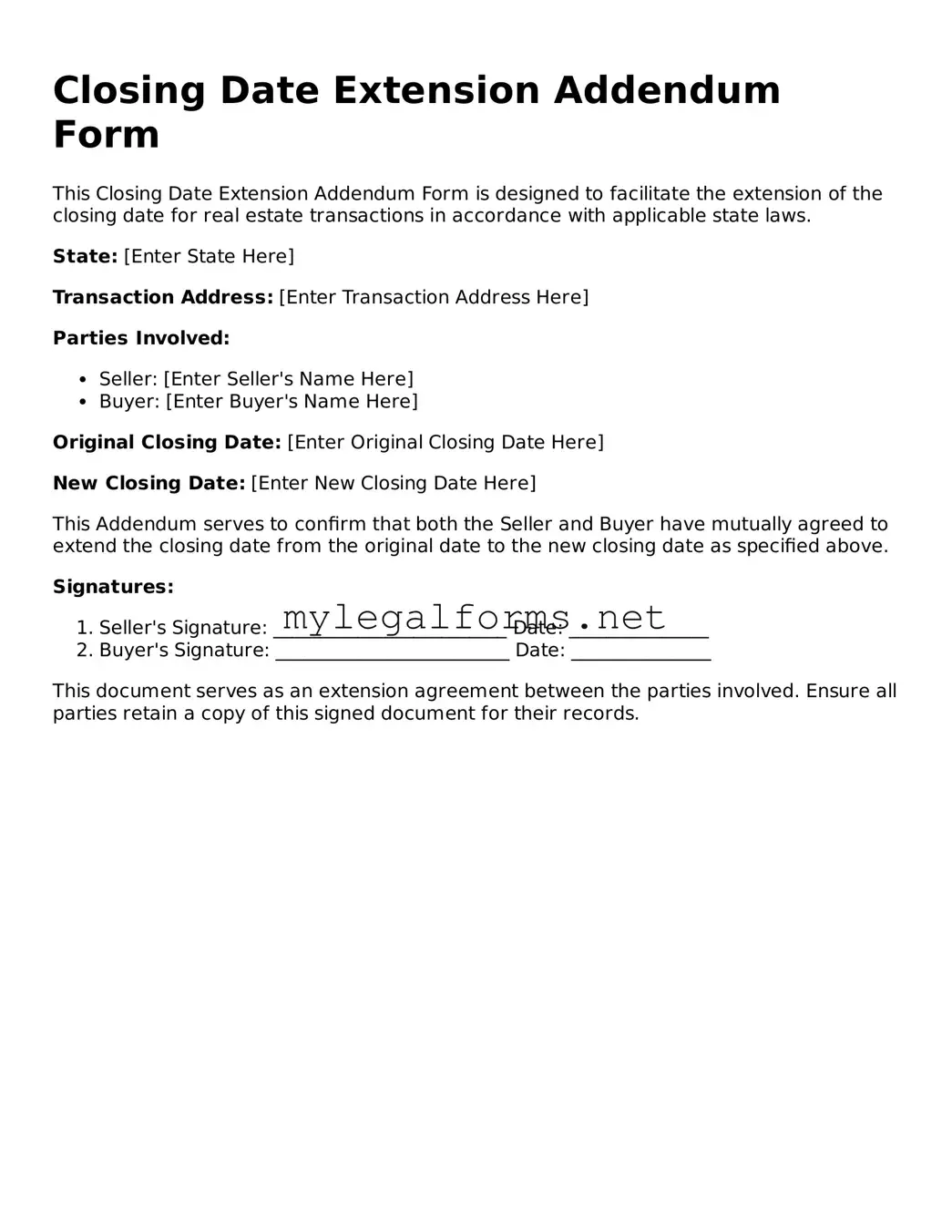When it comes to real estate transactions, timing is often critical. However, unexpected circumstances can lead to the need for a Closing Date Extension Addendum Form. Unfortunately, many individuals make common mistakes when filling out this important document, which can lead to complications down the line.
One frequent mistake is failing to include all necessary parties' signatures. This form requires the signatures of both the buyer and the seller. If either party neglects to sign, the extension may not be legally binding. It is essential to ensure that everyone involved in the transaction has reviewed and agreed to the changes before submitting the form.
Another common error is not clearly stating the new closing date. Vague language or ambiguous terms can create confusion. The new closing date should be clearly defined to avoid any misunderstandings. Precision in language helps all parties remain on the same page, preventing potential disputes later.
People often overlook the importance of documenting the reason for the extension. While it may seem unnecessary, providing a brief explanation can offer clarity and context for the delay. This additional information can be beneficial if questions arise in the future regarding the change in the closing date.
Additionally, some individuals fail to check for consistency with other documents related to the transaction. If the extension contradicts previously agreed-upon terms, it can lead to legal challenges. It is crucial to review all related paperwork to ensure that the extension aligns with the overall agreement.
Lastly, neglecting to communicate the extension to relevant third parties is a mistake that can have significant repercussions. Lenders, title companies, and real estate agents should be informed of the new closing date to adjust their schedules and processes accordingly. Clear communication fosters a smoother transaction and helps maintain positive relationships among all parties involved.
By being aware of these common mistakes, individuals can approach the Closing Date Extension Addendum Form with greater confidence and clarity. Taking the time to fill out the form correctly can save time, reduce stress, and ensure a smoother closing process.
